Learn to photograph Northern Lights like a pro. Sign up for Peter Rosen's Aurora Photo Courses in Abisko National Park. | | |
SOLAR WIND SPARKS ARCTIC LIGHTS: A high-speed stream of solar wind is buffeting Earth's magnetic field, and this is sparking bright auroras around the Arctic Circle. Luba Trifonova sends this picture from the Kola Peninsula of Russia:
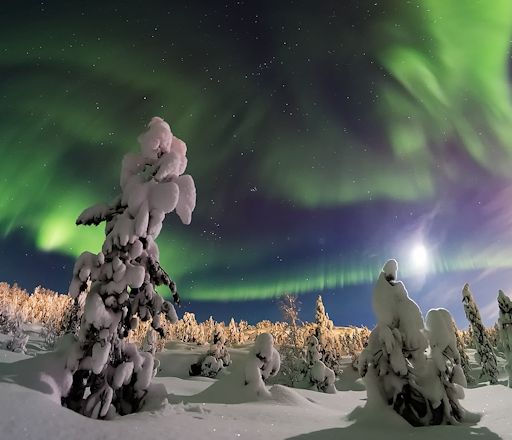
"The moonlight glistened off the snow and made a beautifully white foreground for the green lights overhead," she says.
On Dec. 29th, the solar wind excited several episodes of G1-class magnetic storming and pushed Northern Lights across the Canadian border into several US states. "Here in Wisconsin, we saw auroras for the first time since October," reports Justin Phillips of New Auburn, WI.
More auroras are in the offing. NOAA forecasters estimate a 30% chance of geomagnetic storms on Dec. 30th as the solar wind continues to blow. Aurora alerts: text, voice
COMET LOVEJOY BRIGHTENS: It's official. Comet Lovejoy (C/2014 Q2) is now a naked-eye object. Science journalist and longtime comet watcher Mariano Ribas of the Planetario de la Ciudad de Buenos Aires, Argentina, reports that "Comet Lovejoy has reached magnitude 5.0, just above the threshold for human visibility from dark-sky sites. Even in the light polluted sky of Buenos Aires, the comet is a very easy object in 10x50 binoculars."
On Dec. 28th, Italian astrophotographer Rolando Ligustri used a remotely-controlled telesope in Australia to capture this image of the comet passing by star cluster M79:
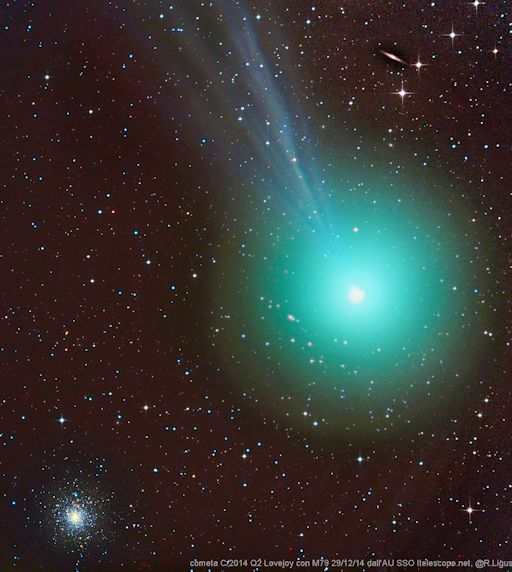
Alan Dyer, author of the e-book How to Shoot Nightscapes and Timelapses, confirms the comet's growing brightness: "From my dark observing site near Silver City, New Mexico, the comet was visible to the naked eye on Dec. 27-28, though only if you knew just where to look."
Roughly speaking, the comet is passing south of the constellation Orion. Finder charts from Sky & Telescope will help you find it in the midnight sky. For accurate pointing of telescopes, an ephemeris from the Minor Planet Center is available.
For astrophotographers interested in "beauty shots," Comet Lovejoy has a marvelous pallette. The sinuous blue ion tail both contrasts and compliments the comet's puffy green atmosphere. These colors come from ionized carbon monoxide (CO+) and diatomic carbon (C2), which glow blue and green, respectively, in the near-vacuum of interplanetary space.
"Looking the behaviour of this comet over the past month, I think that it will brighten to magnitude 4.5 or even 4.0 in the first week of 2015," predicts Ribas. If so, the show has just begun. Stay tuned for updates.
Realtime Comet Photo Gallery
SUDDEN DECREASE IN COSMIC RAYS: Every day, Earth is bombarded by galactic cosmic rays--subatomic particles accelerated to high energies by distant supernovas, stellar flares, and other explosions. On Dec. 21st, ground-based neutron monitors detected a sudden decrease in this cosmic radiation:
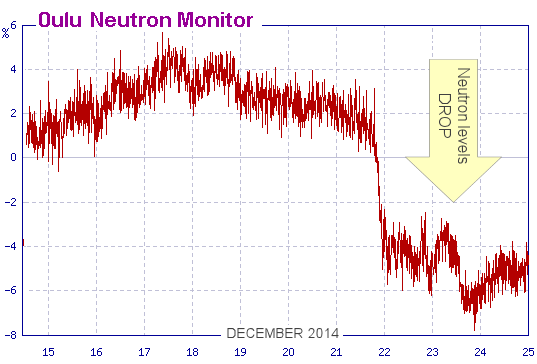
What happened? Over a 48-hour period beginning on Dec. 21st, a series of three CMEs passed by Earth, sweeping aside many of the cosmic rays that would normally bombard our planet. The clearing action of the CMEs produced some of the lowest radiation levels of the current solar cycle. Events like this (called "Forbush Decreases") are of considerable interest to anyone who flies on a plane. Airline passengers, pilots, and flight attendants all absorb cosmic rays during their travels at altitudes above ~20,000 feet.
To investigate how the Forbush Decrease propagated through the atmosphere, Spaceweather.com and the students of Earth to Sky Calculus launched a pair of radiation sensors to the stratosphere. Carried aloft by a helium balloon, their "Space Weather Buoy" reached an altitude of 117,900 ft. This photo was taken by a BuoyCam just seconds before the balloon exploded:
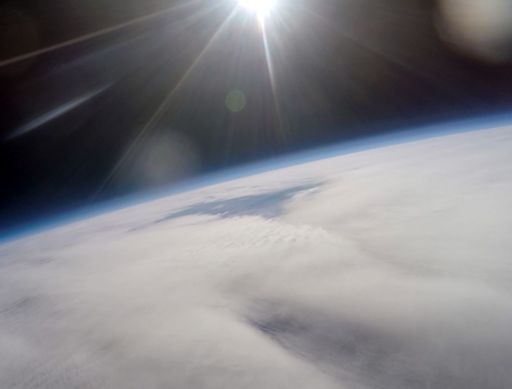
The payload parachuted back to Earth and landed in the Grapevine Mountains of Nevada (not far from Death Valley National Park) on Dec. 24th. A student-canine team have since entered the wilderness and recovered the payload. First impressions: The Buoy took some great pictures and recorded a complete profile of ionizing radiation from ground level to the stratosphere. The students will be able to compare these data with dozens of previous profiles measured since 2013 and, thus, discover the effect of the Forbush Decrease on altitudes of interest to aviation and space tourism. Stay tuned for updates.
Hey thanks! The students wish to thank Gary Worrell of the Johns Hopkins University Applied Physics Lab for sponsoring this flight. His generous donation of $500 made it possible to buy the helium and other supplies necessary to get this mission off the ground. Note the logo of his personal web site, http://igx.net, in this snapshot of the payload ascending toward the stratosphere:
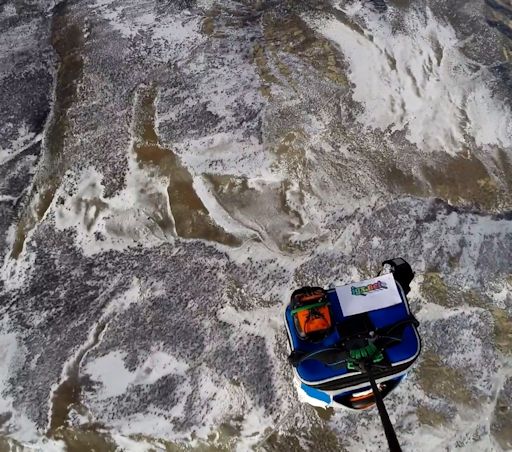
Readers, if you would like to sponsor a balloon flight like Gary Worrell did, please contact Dr. Tony Phillips to make arrangements.
Realtime Space Weather Photo Gallery
Realtime Aurora Photo Gallery
Every night, a network of NASA all-sky cameras scans the skies above the United States for meteoritic fireballs. Automated software maintained by NASA's Meteoroid Environment Office calculates their orbits, velocity, penetration depth in Earth's atmosphere and many other characteristics. Daily results are presented here on Spaceweather.com.
On Dec. 30, 2014, the network reported 43 fireballs.
(35 sporadics, 7 December Leonis Minorids, 1 Quadrantid)

In this diagram of the inner solar system, all of the fireball orbits intersect at a single point--Earth. The orbits are color-coded by velocity, from slow (red) to fast (blue). [Larger image] [movies]
Potentially Hazardous Asteroids (
PHAs) are space rocks larger than approximately 100m that can come closer to Earth than 0.05 AU. None of the known PHAs is on a collision course with our planet, although astronomers are finding
new ones all the time.
On December 30, 2014 there were potentially hazardous asteroids.
Notes: LD means "Lunar Distance." 1 LD = 384,401 km, the distance between Earth and the Moon. 1 LD also equals 0.00256 AU. MAG is the visual magnitude of the asteroid on the date of closest approach. | | The official U.S. government space weather bureau |
| | The first place to look for information about sundogs, pillars, rainbows and related phenomena. |
| | Researchers call it a "Hubble for the sun." SDO is the most advanced solar observatory ever. |
| | 3D views of the sun from NASA's Solar and Terrestrial Relations Observatory |
| | Realtime and archival images of the Sun from SOHO. |
| | from the NOAA Space Environment Center |
| | the underlying science of space weather |

